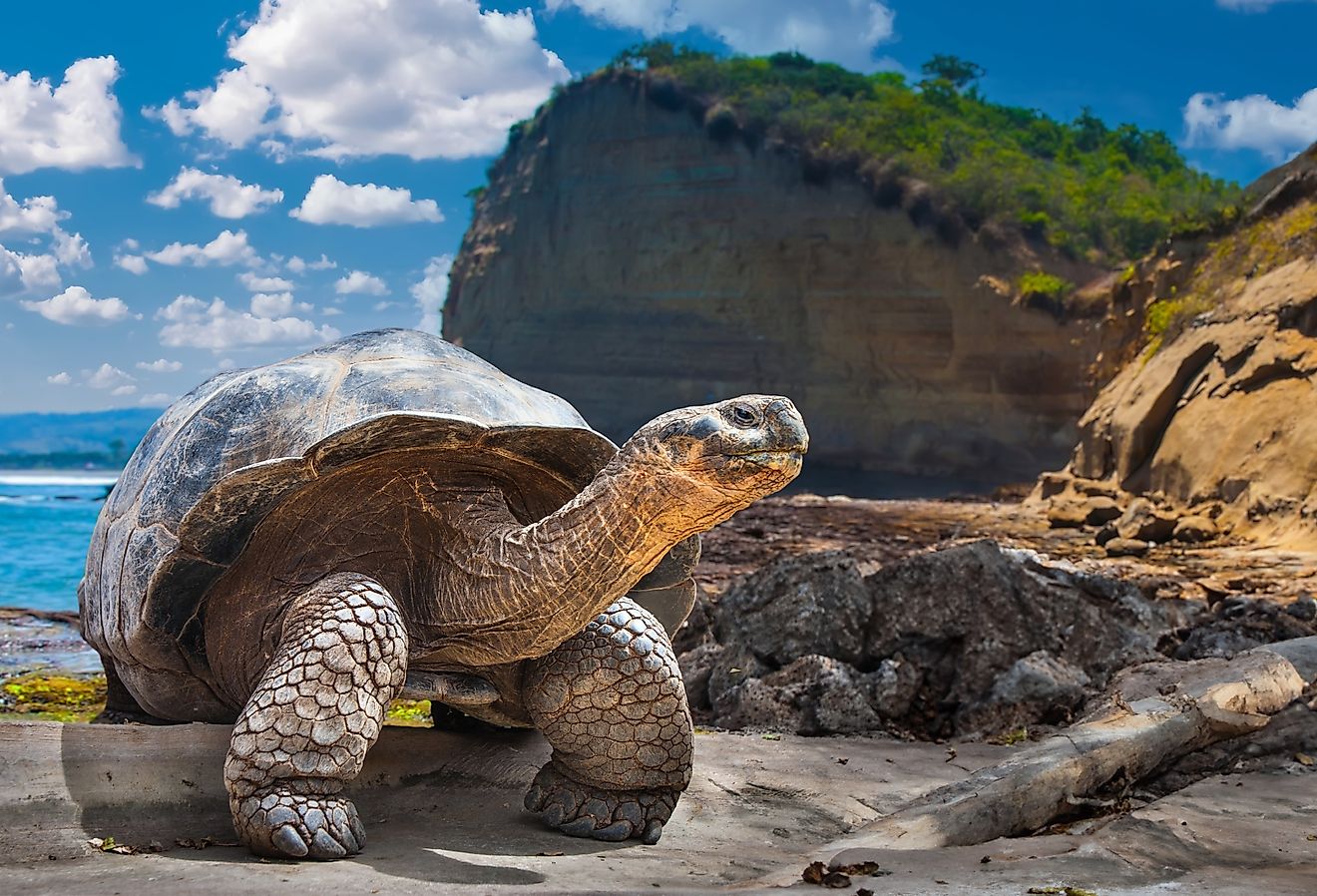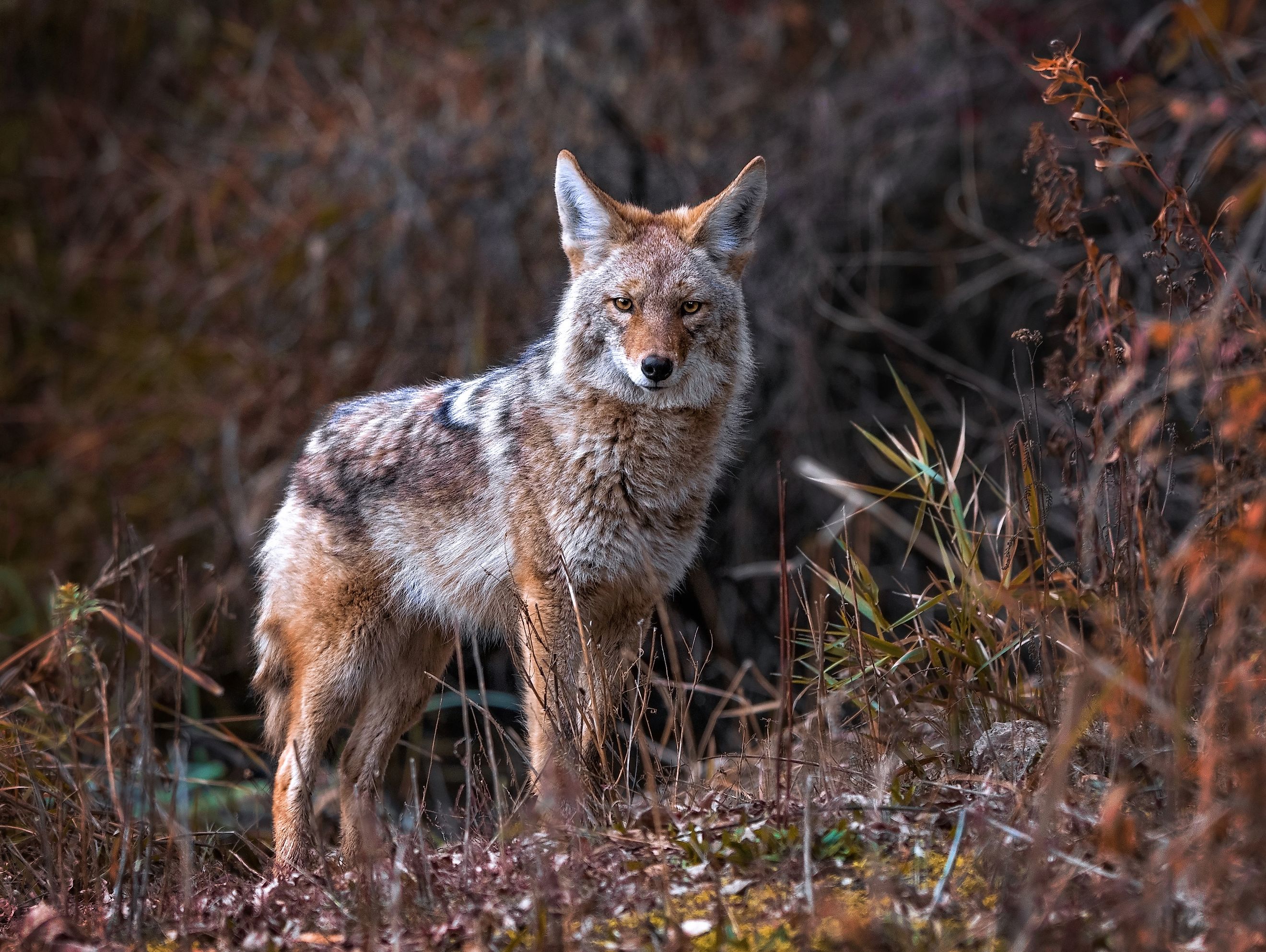
The 10 Deadliest Animals in Rhode Island
Rhode Island is the smallest U.S. state, sharing its borders with only Connecticut, Massachusetts, and the Atlantic Ocean. One of the six New England states, Rhode Island, is fairly safe when it comes to your risk of a chance encounter with a deadly animal. That said, much of Rhode Island remains undeveloped and lots of tourists flock to the region to reconnect with nature. Whenever you're spending time outdoors, you do face the risk of encountering a dangerous or deadly animal, and it's important to be aware of how to prevent illness and know the signs of needing to seek medical attention.
Asian Giant Hornets
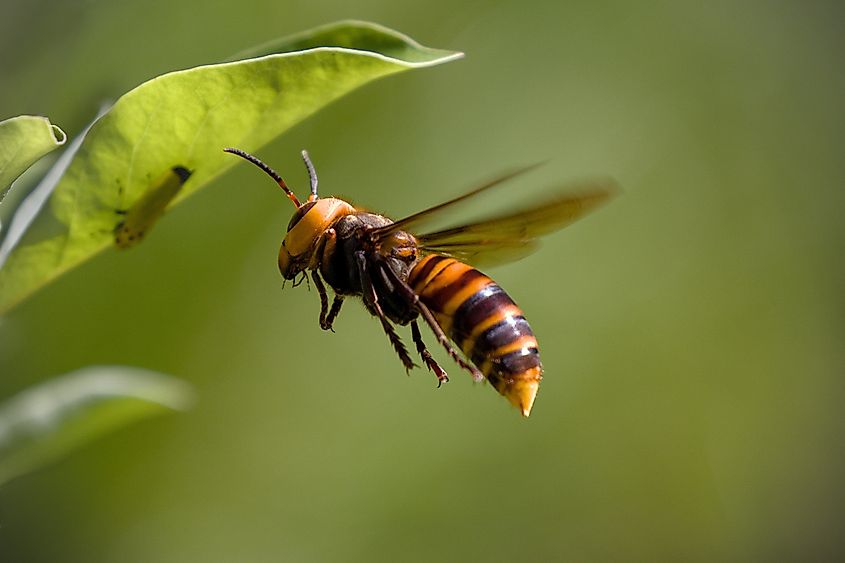
Asian giant hornet image.
The Asian giant dhornet is a very new species to the United States, having been first identified in December of 2019. These hornets have not been confirmed in Rhode Island but are pretty dangerous when encountered. They are around 1.5-2 inches in length and have a powerful sting that can cause an allergic reaction in those with an allergy to other wasps or bees. There are several look-alikes in the area, including the Eastern cicada killer and the European hornet, but the Asian giant hornet can be identified by its large yellow-orange head and orange and black stripes. They will kill honey bees in and around their hive, often snapping them into smaller pieces.
Bees
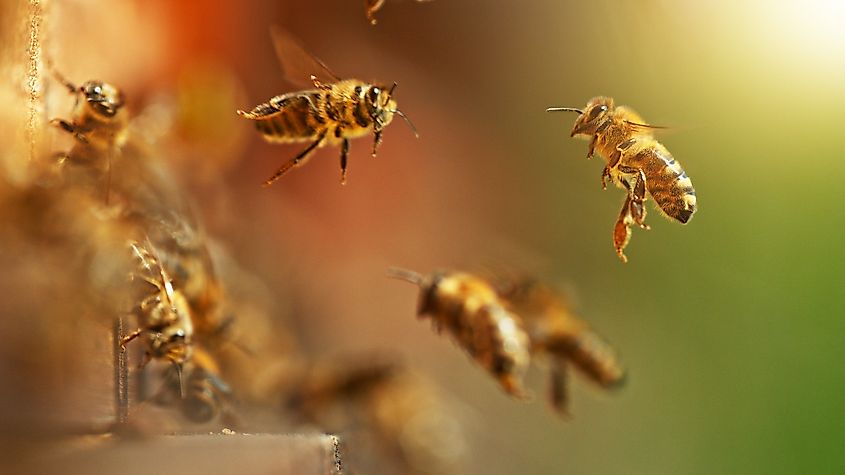
Honey bees fly into a beehive and gather pollen in a meadow.
Although bees are incredibly important for the world's plants, acting as key pollinators throughout much of the U.S., those who have an allergy to a bee sting may experience a fatal reaction if not treated with an epi-pen and medical care swiftly. There are over 150 species of bee native to Rhode Island, with some of the most common groups including bumblebees, carpenter bees, digger bees, and sweat bees. Bees can both nest underground or in hives attached to a tree or large rocks. The best way to avoid a fatal sting is by simply leaving them be.
Black Bears
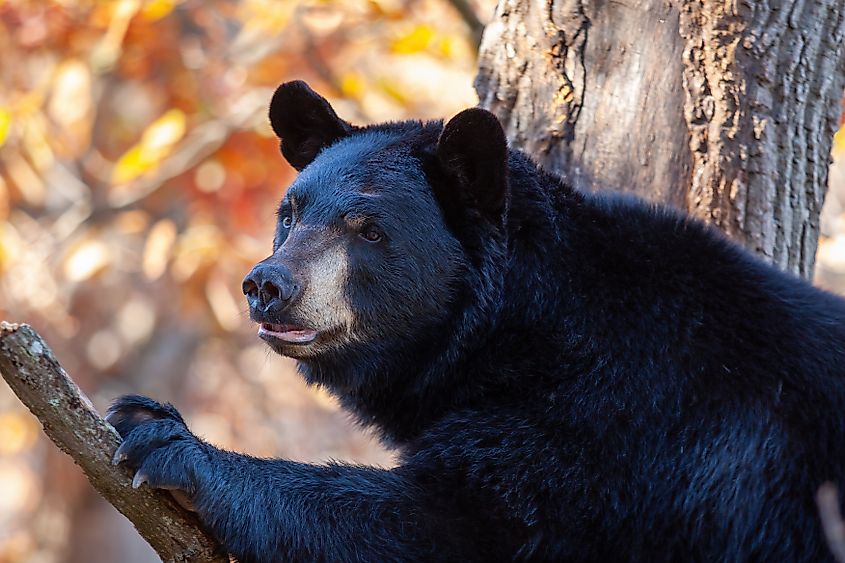
Black bear perched on a tree branch, looking into the distance.
The American black bear has been sighted in Rhode Island, though they are not commonly found there. They have seen significant habitat and population loss since Europeans settled on the continent. They are the smallest species of bear found in North America and prefer to live solitary lives in quieter parts of wooded areas. They are omnivores but live mostly off of flora, dead animals, and insect larvae. Black bears are likely to be more afraid of humans than grizzly bears but will attack when threatened, especially when pregnant and when with cubs, so it's best to leave them alone when encountered.
Rattlesnakes
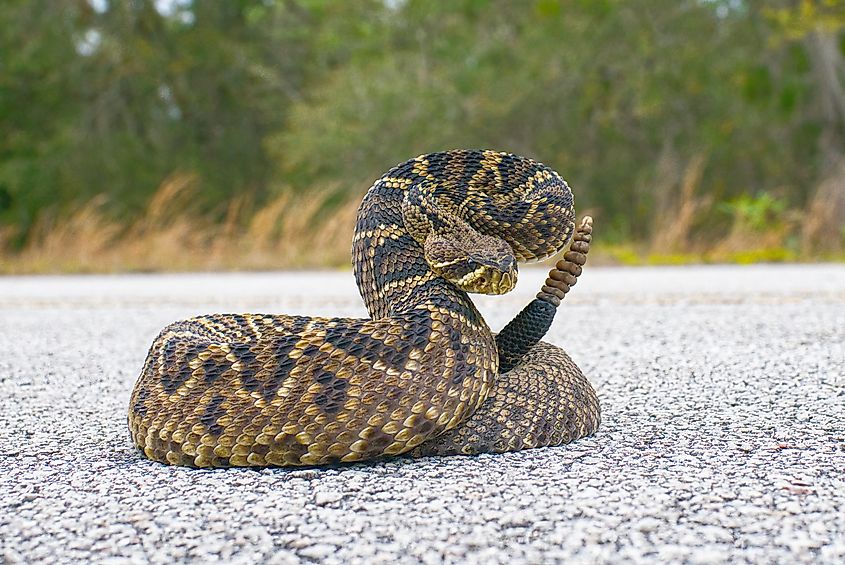
Eastern Diamondback rattlesnake (Crotalus adamanteus).
Timber rattlesnakes were historically native to Rhode Island, but their population has declined significantly. That said, there is currently a Timber Rattlesnake Recovery Program attempting to revitalize the timber rattlesnake population in Rhode Island and the surrounding New England states. It is likely that as seasons grow continuously warmer, Timber Rattlesnakes will repopulate the state widely. Like with all other kinds of rattlesnakes, their bites are venomous and require medical attention in order to receive an appropriate antivenom.
Mosquitoes
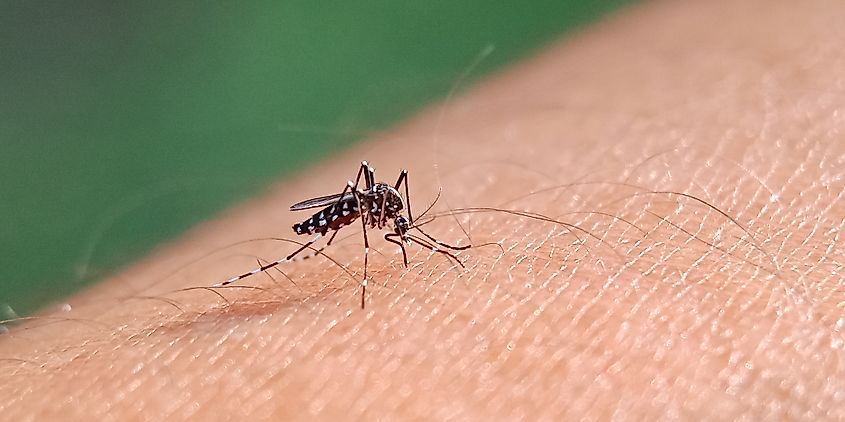
Selective focus on an Aedes mosquito feeding.
Mosquitos are a nearly omnipresent but fatal species of insect due to their capacity for swiftly spreading infectious diseases. In Rhode Island, mosquitos carry the West Nile Virus, Eastern Equine Encephalitis, and Jamestown Canyon Virus throughout the warm months. Mosquitos lay their eggs in large clusters on flat pockets of water, with a volume of only one cup and the capacity to breed hundreds of mosquitos relatively quickly. Lower your risk of being infected by a mosquito-borne illness by staying up to date on relevant vaccines, using mosquito repellent, and screens when sleeping outdoors.
Skunks
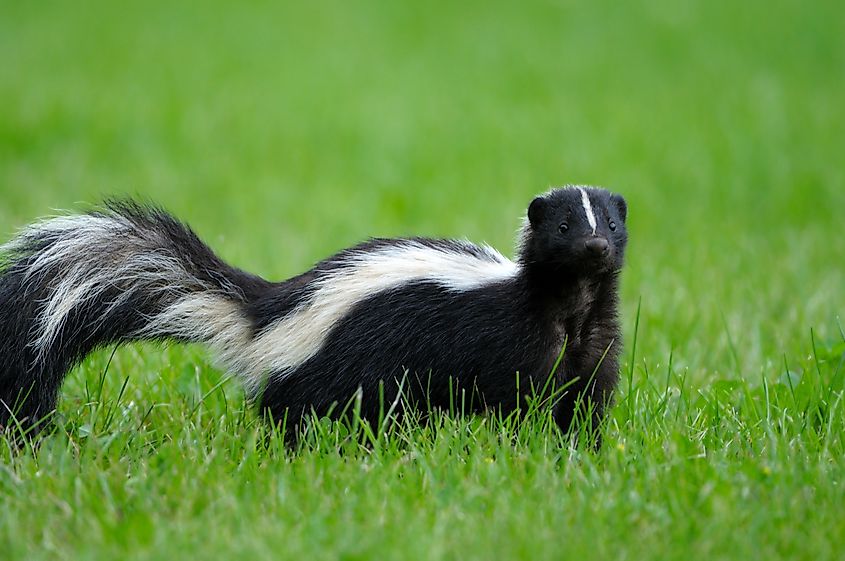
Skunk, a mammal and member of the weasel family.
Skunks are found throughout almost all of Rhode Island. The striped skunk is the most abundant species in the state, and you are most likely to encounter them at night. Although skunks are typically harmless beyond the odor they excrete when startled, the biggest deadly risk when encountering a skunk is being infected with rabies. A scratch or bite from an infected skunk should always be tended to by a medical professional to both rule out rabies and prevent other infections from brewing in the affected area. The best way to prevent an encounter with a skunk is to make sure all trash is covered and away from the animal's reach.
Raccoons
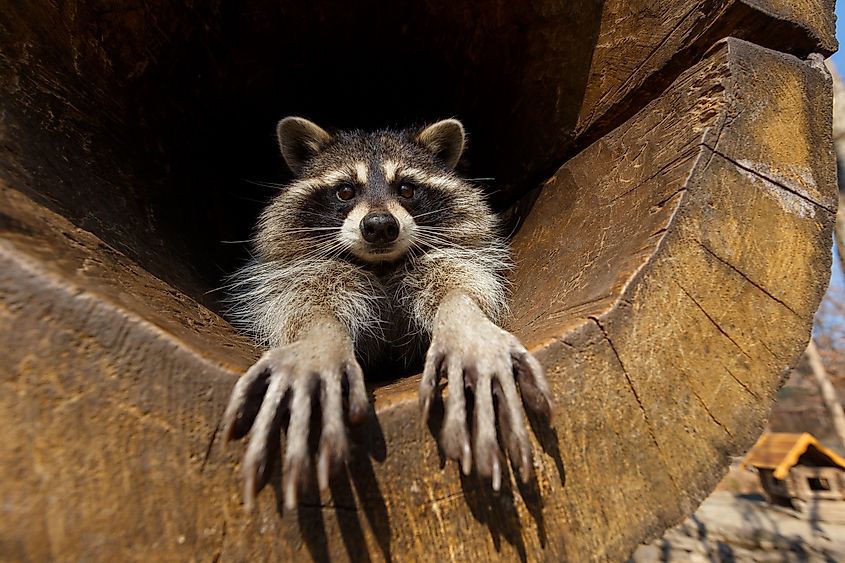
Raccoon in a hollow, extending its paws towards the camera and making direct eye contact.
Raccoons are one of the most prevalent animals in Rhode Island, most often found in suburban areas. They eat crops, tear through garbage, and can carry diseases. Raccoons are typically between 12 and 35 pounds and are most likely to be aggressive when hungry or with cubs. They are strictly nocturnal, so if you see a raccoon out and about during the day, it is likely sick and worth keeping your distance from. Beyond aggression, the highest risk of disease from an encounter with a raccoon is rabies. Any bite or scratch from a raccoon likely calls for a preventative rabies shot.
Coyotes
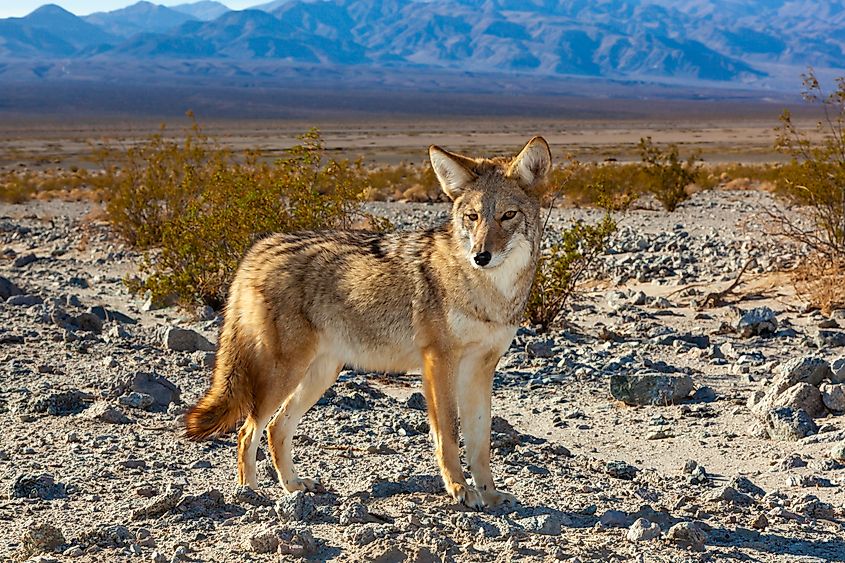
Coyote (Canis latrans) in Death Valley National Park, California, USA.
The Eastern coyote is widely found throughout the state. They are scavengers who also hunt, meaning that they eat a wide diet based on what is available in their immediate environment. They are most active at night as well as dusk and dawn, though it is not a significant cause for concern if you see one out during the day. These animals are fast and can run up to 40 miles per hour, often working in packs to hunt down their prey. They are most likely to attempt to attack infants and toddlers. That said, they do pose the risk of spreading rabies, and diseases they may have picked up from fleas and ticks when they bite or scratch.
Foxes
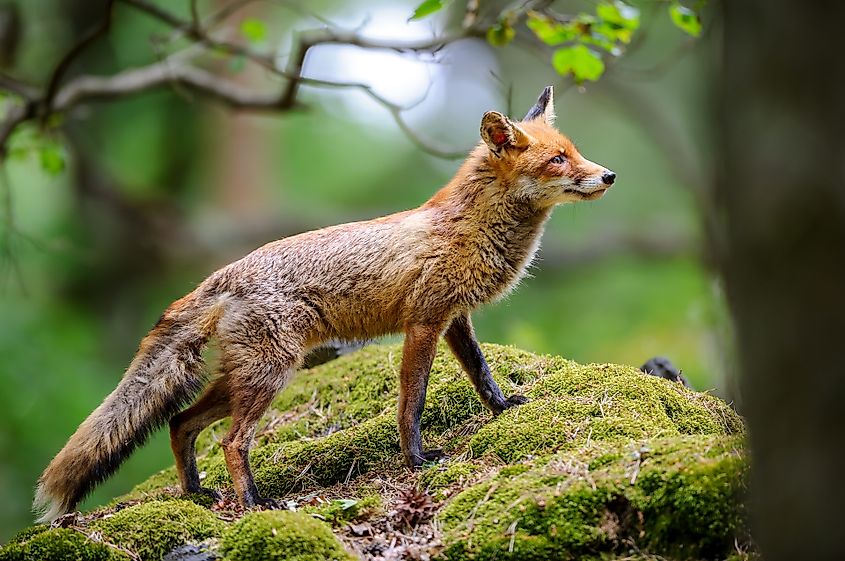
Close-up of a wild fox on a mossy rock in its natural forest habitat.
Although foxes are wild animals, they are widely found in suburban and urban spots throughout Rhode Island. The area is home to both red and grey foxes. Although they are afraid of humans, a surprise encounter with a fox may startle them enough to bite or scratch, risking the spread of rabies, and other illnesses they may have. They pose the highest threat to infants, though altercations between foxes and human babies are rare. It's important to stay vigilant at dusk and dawn, especially if near garbage or open food.
Fishers
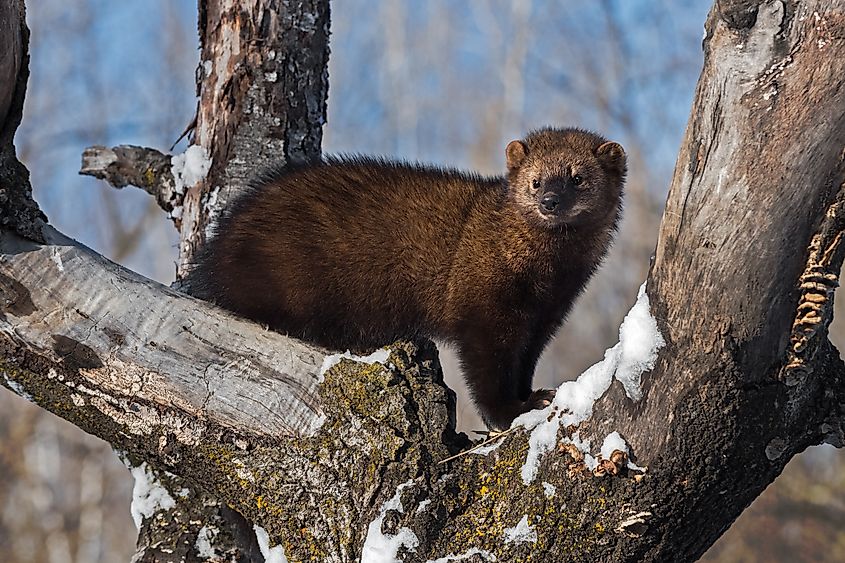
Fisher (Martes pennanti) standing in a tree.
Fishers are a moderately-sized mammal part of the Mustelidae family alongside weasels and wolverines. They are notorious for breaking into livestock pens and taking prey. They can weigh between 4 and 15 pounds and are most often found in forested areas. They are mostly nocturnal though it is not unusual to see one out in the daytime. They are strong climbers and hunters, living mostly off of small animals. They can carry and spread Rabies, sarcoptic mange, as well as a few parasites and diseases carried by fleas and ticks. If bitten or scratched by a fisher, seek preventative but timely medical care.
Staying Safe in Rhode Island's Wilderness
Although the dangerous animals native to Rhode Island are not nearly as deadly as in other states, such as Arizona, it is essential to remain aware of wildlife and keep a distance from animals, especially mammals exhibiting bizarre behavior, as they may be carrying rabies. If you've been bitten by a wild or feral mammal in Rhode Island, seek immediate medical attention to receive a rabies vaccination. Otherwise, stay clear of any insects that may cause an allergic reaction, such as the honey bee, and make the most of your time in the Ocean State.

